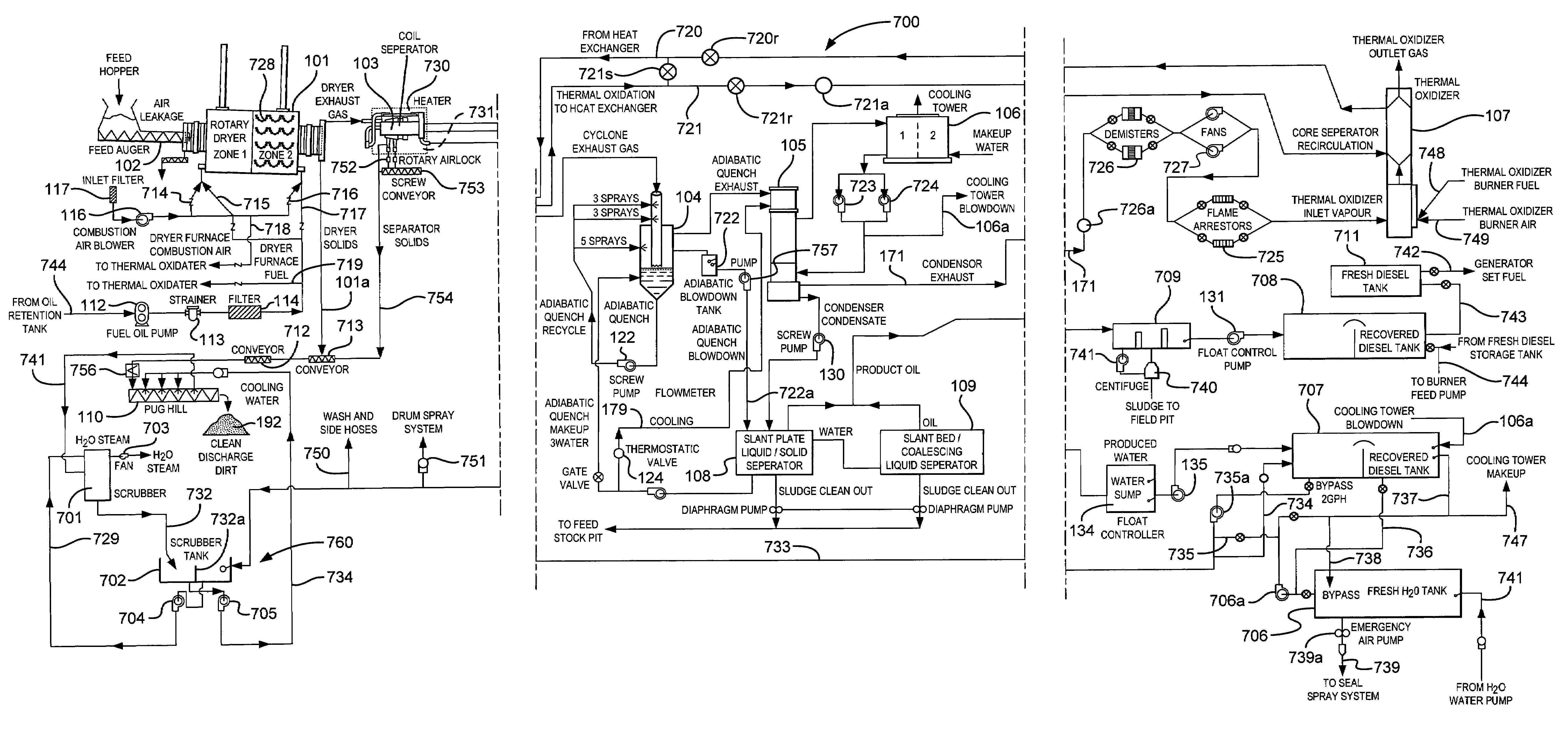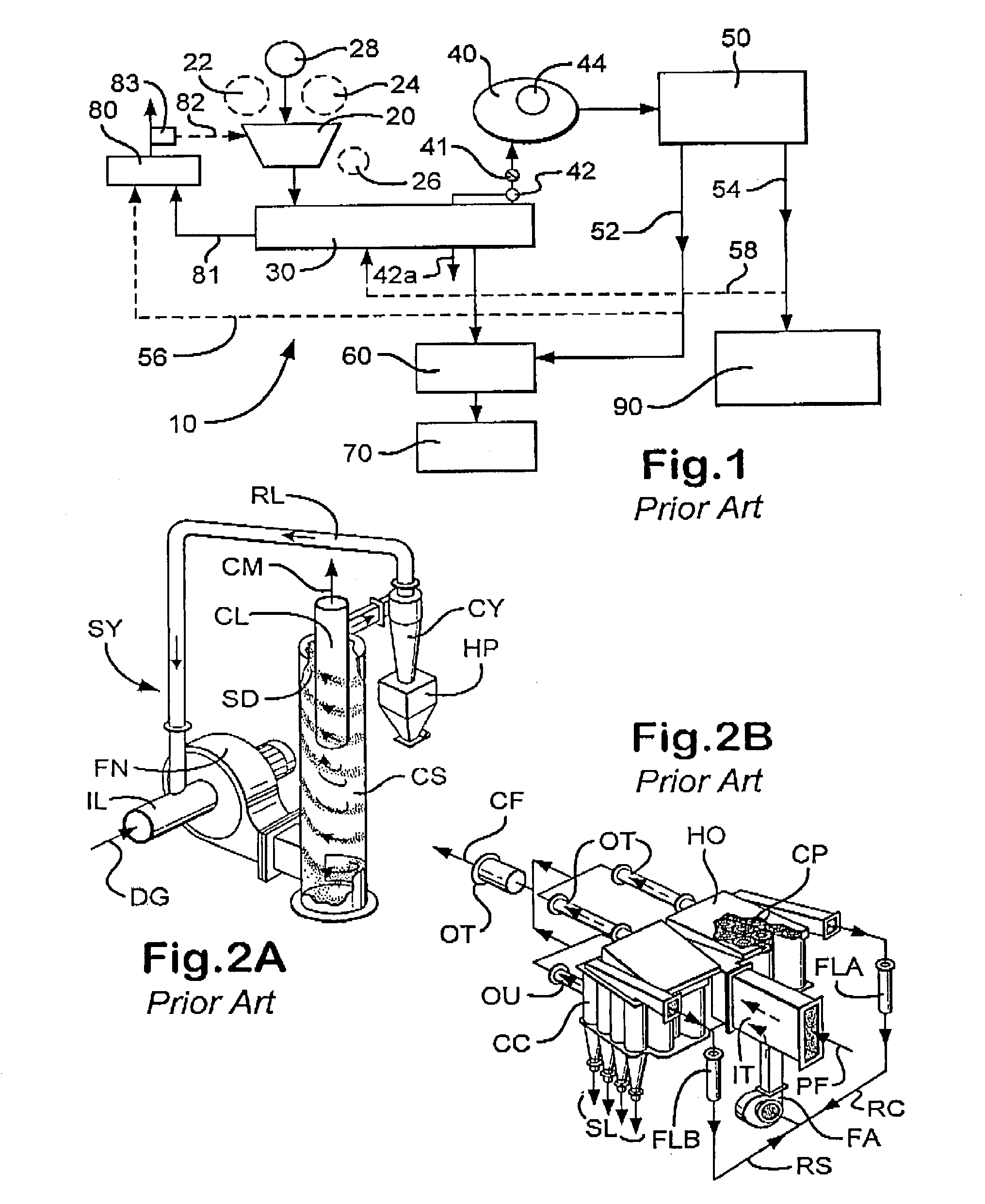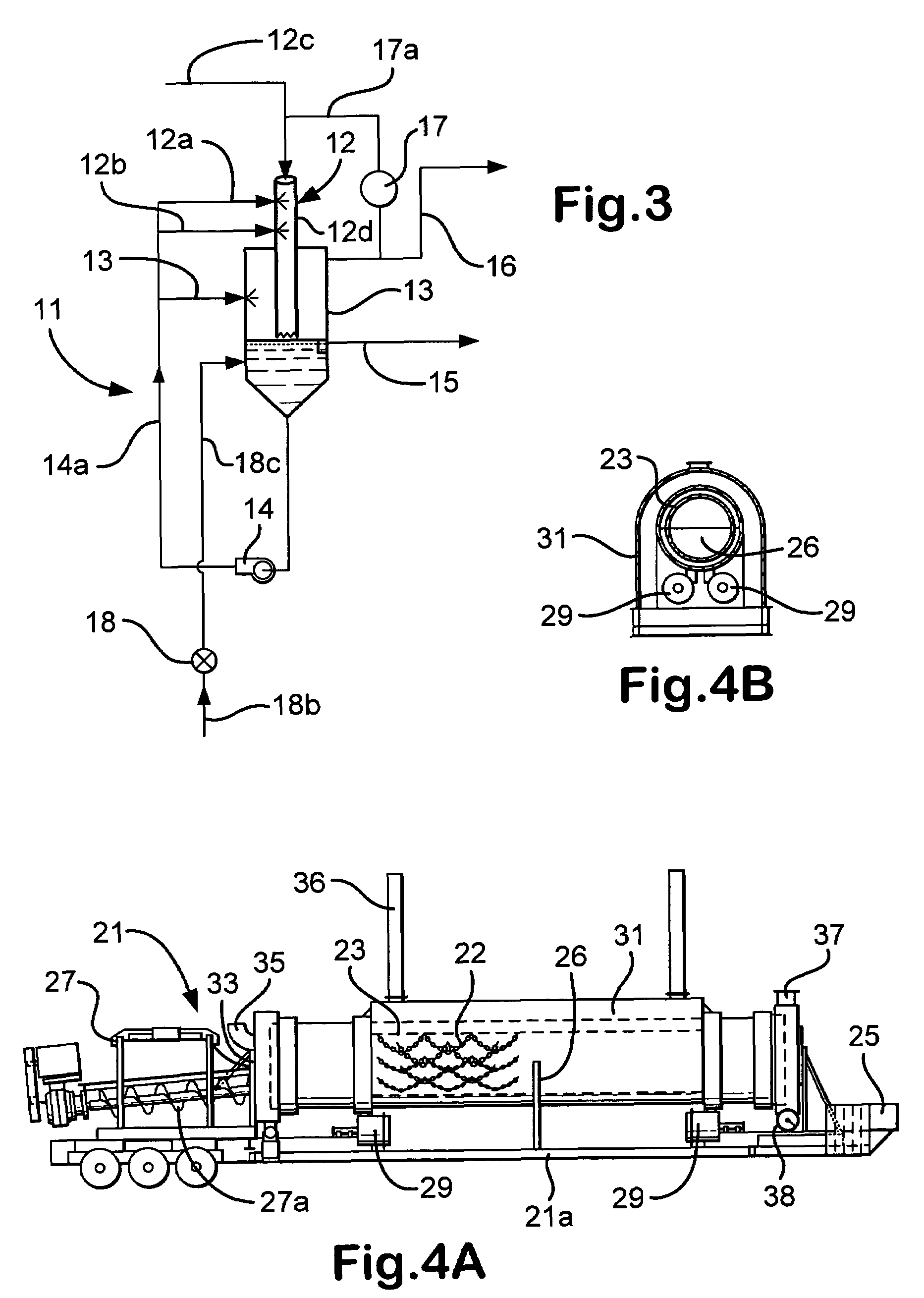Thermal drill cuttings treatment with weir system
a weir system and drilling cutting technology, applied in the direction of centrifuges, borehole/well accessories, separation processes, etc., can solve the problems of increasing wear on mud pumps and other mechanical equipment used for drilling, increasing the difficulty of cuttings on-site at an offshore rig, and increasing the cost of operation, so as to reduce the size of condensing and particulate collection equipment and high hydrocarbon contamination
- Summary
- Abstract
- Description
- Claims
- Application Information
AI Technical Summary
Benefits of technology
Problems solved by technology
Method used
Image
Examples
Embodiment Construction
[0058]As shown in FIG. 1, one particular embodiment of a system 10 according to the present invention has a feed hopper 20; a dryer 30; a condenser 40; an oil / water separator 50; a rehydration system 60; a discharge 70; an exhaust stack 80; and an oil processor 90. But for additions and changes according to the present invention as described in detail below, FIGS. 1, 5, 5 and 9 describe prior art.
[0059]Initially, cuttings in a drilling fluid are processed by a rig's shaker system, producing fluid, soil, and oily contaminated cuttings and solids (collectively “oily solids”). These oily solids in a slurry of solids, oil and water are fed to the feed hopper 20 (e.g. from: an end loader; conveyor belt; auger; vacuum system from the shakers; mud cleaner, hydrocyclone and / or centrifuge).
[0060]The feed hopper may include appropriate crushers, shredders, and / or classifiers. A “grizzly unit” (i.e. a screening system with relatively large openings) may be used positioned over the top of the f...
PUM
| Property | Measurement | Unit |
|---|---|---|
| diameter | aaaaa | aaaaa |
| temperatures | aaaaa | aaaaa |
| temperatures | aaaaa | aaaaa |
Abstract
Description
Claims
Application Information
 Login to View More
Login to View More - R&D
- Intellectual Property
- Life Sciences
- Materials
- Tech Scout
- Unparalleled Data Quality
- Higher Quality Content
- 60% Fewer Hallucinations
Browse by: Latest US Patents, China's latest patents, Technical Efficacy Thesaurus, Application Domain, Technology Topic, Popular Technical Reports.
© 2025 PatSnap. All rights reserved.Legal|Privacy policy|Modern Slavery Act Transparency Statement|Sitemap|About US| Contact US: help@patsnap.com



